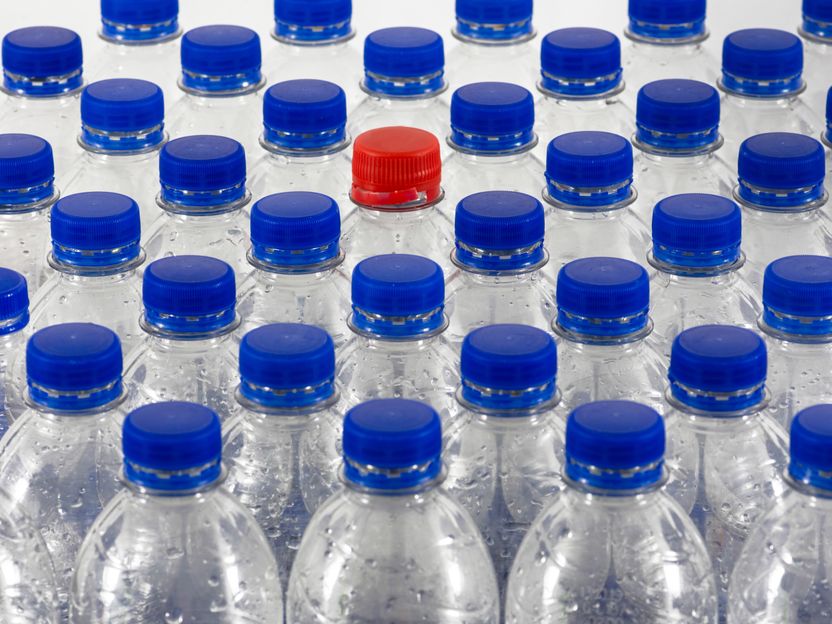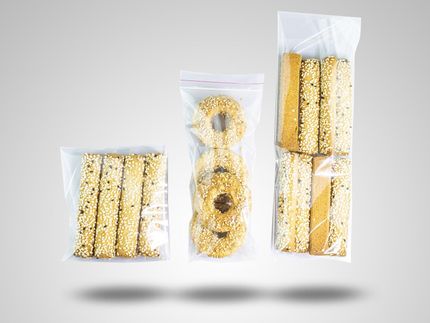Chemical mix of harmful and unknown substances in plastic packaging
Advertisement
Research group PlastX detects more than a thousand chemicals in plastic products - three out of four products contain harmful substances. Plastic products are ubiquitous and indispensable in many areas of life, because they are versatile and practical. But are they harmless? The PlastX research group, led by the ISOE - Institute for Social-Ecological Research, has investigated everyday plastic products and found that three quarters of the products contain harmful chemicals. In addition, a large proportion of the substances in this chemical mix cannot be identified. The results of the laboratory study appear today in the journal Environmental Science & Technology.

Image by Willfried Wende from Pixabay
No other material is so practical: Durable, temperature-resistant, break-resistant and yet elastic, plastic is suitable for mass production and therefore available in masses on the market. Depending on the type and application, various additives are added to the malleable material, which is predominantly produced from crude oil in a chemical process. These include plasticizers, stabilizers and dyes. In addition, numerous by-products or degradation products are produced during the production process. "The complex production process of plastics produces a cocktail of substances, most of which we don't even know about," says Carolin Völker, head of the PlastX research group.
In a laboratory study, scientists* from the PlastX research group under the direction of ISOE and in collaboration with the Goethe University in Frankfurt and the Technical and Scientific University of Norway therefore investigated the total toxicity and composition of chemicals in 34 everyday plastic products. In the laboratory study, the scientists* analysed products such as yoghurt pots, drinking bottles and shampoo bottles made of eight different types of plastic. In order to analyse possible harmful effects of the chemical mixture, the substances were removed from the products in the laboratory and used in cell tests. Thus, for the first time in a laboratory study, several different types of plastics were examined and compared in a series of biotests combined with chemical analysis. The results of the PlastX study appear today in the journal "Environmental Science and Technology".
Three out of four plastic products tested contain harmful chemicals
The study provided several important results for the researchers*. "We found harmful substances in three of the four products tested, including chemicals that have a toxic effect on cells or cause endocrine, i.e. hormone-like effects," reports Lisa Zimmermann, first author of the study. We have observed significant negative effects in cell tests. Such chemicals should not be found in plastics, even if we do not know how they affect our health," concludes Zimmermann.
The plastic types polyvinyl chloride (PVC) and polyurethane (PUR) contained a larger number of chemicals and the effects were more alarming than those in polyethylene terephthalate (PET). "Overall, we were surprised by the large number of different chemicals that we were able to detect in the tested plastic products," said ecotoxicologist Lisa Zimmermann. "In total, more than 1400 chemicals were contained in the products. In some products we even found more than a hundred different substances. Of these 1400 substances, only 260 could be identified in the laboratory. "We were unable to identify slightly more than 80 percent of all detected substances using chemical analyses," said Zimmermann. "This means that for the most part we do not know what we are dealing with in plastic products. And if we do not know the chemicals, we cannot determine whether they are safe for humans and the environment. The authors of the study point out that the health effects of chemicals in plastics are therefore still largely unknown. Only individual chemicals such as bisphenol A, which is a health hazard, have been well investigated so far.
What consumers need to know
"Not all of the plastic products tested contained toxic chemicals. So we can see that there are already safer alternatives on the market," says PlastX project manager Carolin Völker. "As our study shows, one yogurt pot can contain toxic chemicals, while another is free of them." However, because this is not evident when shopping, it is important that the topic of safe plastics is put on the political agenda. "There should be binding requirements for plastics producers to make the ingredients transparent and to guarantee the safety of their products," demand the researchers.
Not only because of the many unknowns - also with regard to the problem of plastic waste - the research team considers the avoidance of plastic to be a practicable strategy for consumers. There are now many ways of buying fresh and unpackaged food, for example, instead of buying plastic-sealed products. "If there is a microwave product packaged in plastic among the purchases, however, the heating in this packaging should absolutely be avoided", warns ecotoxicologist Völker, "because especially the heat accelerates the transfer of chemicals from the plastic into the food". Other packaging alternatives, such as paper or cardboard, are not necessarily safer, because here too chemicals can contaminate food.
Caution also with bioplastic alternatives
As "green" alternatives to conventional plastics, products made of so-called bioplastics have been on the market for several years. They are not obtained from crude oil, but from biomass. But here too, chemicals are proving to be a problem: in the PlastX laboratory study, products made of polylactic acid (PLA), a common bioplastic, were investigated. All these products contained harmful chemicals. "Bioplastics are also plastics whose polymers come only from another source," said Lisa Zimmermann. "So it's obvious that similar negative effects can occur." In order to investigate these effects more closely, the PlastX research group is currently devoting itself to bioplastic products in another comprehensive laboratory study.
Note: This article has been translated using a computer system without human intervention. LUMITOS offers these automatic translations to present a wider range of current news. Since this article has been translated with automatic translation, it is possible that it contains errors in vocabulary, syntax or grammar. The original article in German can be found here.






















































